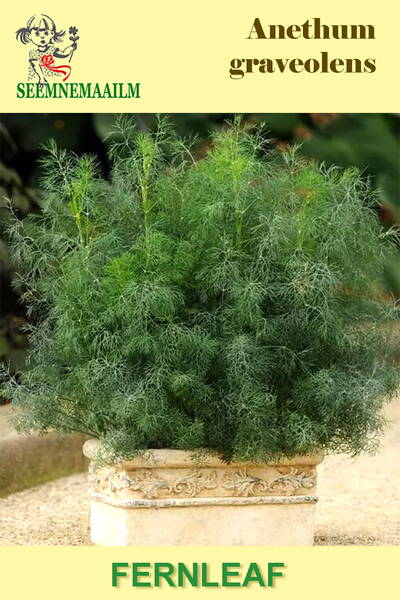A wonderful variety of bush dill with large leaves and a dense rosette for obtaining greens and spices. It does not bloom for a very long time, providing fresh greens almost throughout the summer.
The plant is compact, 30-38 cm high, with a raised rosette, due to which the greens do not get dirty during the rains and are easy to clean. The leaves are deeply dissected, with a strong aroma.
Sowing seeds in the ground is done in late April - early May. Sowing in pots and containers - all year round.
* What is the difference between early and late varieties of dill?
Early varieties of dill quickly form green mass and begin to bloom. Such varieties are most often used to obtain umbrellas for pickling. Late varieties do not begin to bloom for a long time, forming a lot of green mass.
Which dill is suitable for repeated cutting and does not bloom for a long time?
Dills with a long shelf life are suitable for repeated cutting: Almaz, Alligator. They give a lot of greenery, do not bloom for a long time and are suitable for repeated cutting without damaging the growth point.
Which dill is suitable for quickly obtaining umbrellas?
Early varieties of dill: Anker, Grenadier. They will provide you with umbrellas for pickling and marinating faster than other dills.
When can dill be sown?
Sowing can be started at the earliest possible dates, and periodically repeated throughout the summer. Dill is sown before winter in early November, using the varieties Almaz, Amazon, Alligator. In spring, dill greens from winter sowing will be ready 2-3 weeks earlier.
What are the features of growing late-ripening dill for greens?
When growing late-ripening varieties of dill for greens, the main rule is not to thicken the crops. Therefore, in order to realize the potential of this variety, it is necessary to grow the plants sparsely: at a distance of 30 cm from each other. It is better to remove the leaves selectively as needed, without cutting off the entire rosette. If we are harvesting a lot of greens, we can cut off the entire rosette, leaving the young leaves in the center intact. Since the plants grow powerful, it is also necessary to provide them with good nutrition and water.












